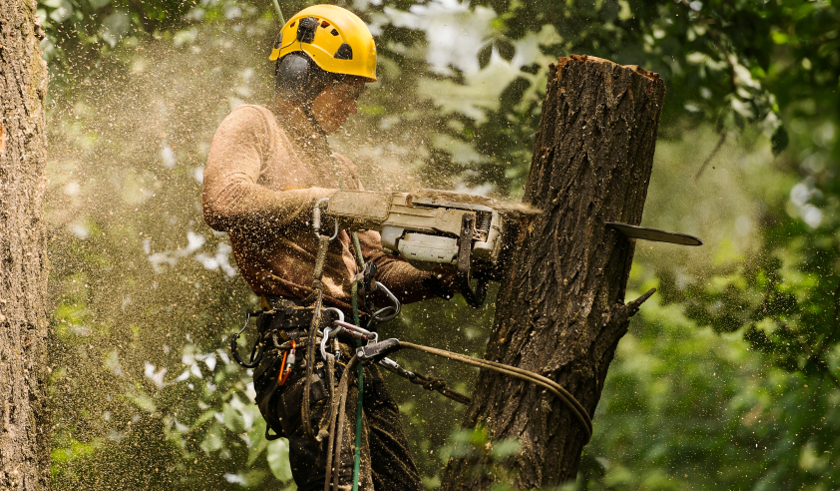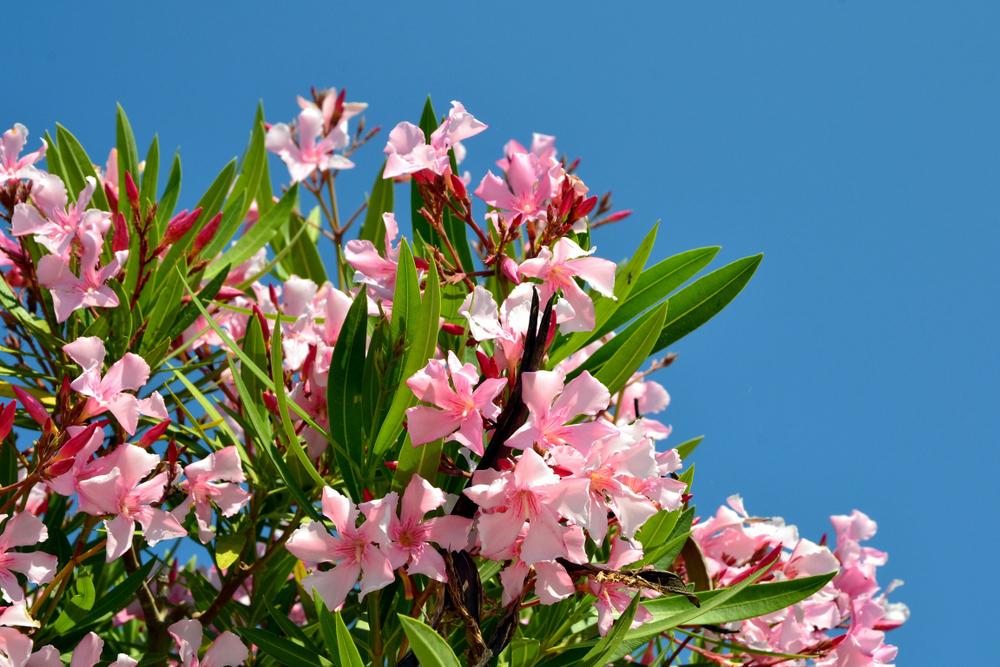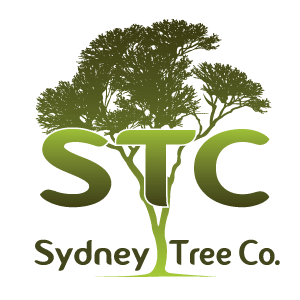
We certainly don’t.
After all, these giants of the plant kingdom nourish us, purify the air, calm our senses and provide shade.
Whenever possible, trees should be left to flourish. Even in the face of multiple challenges, a qualified arborist can usually find a solution that doesn’t involve demolition.
But there are exceptions. Tree removal is sometimes necessary – especially to protect people from safety hazards or to prevent expensive damage to property.
Please remember, most of the time you need council approval before removing a tree from your property in NSW (there are some allowances to this rule – more on this later).
Let’s explore some valid reasons to remove a tree, based on our two decades in the industry….
Main reasons to remove a tree from your property:
- General safety concerns
- Bushfire threats
- The tree is too unhealthy to salvage
- Insect, fungi or pest infestation
- Landscaping and property management issues
- Invasive or poisonous tree species
- Do I need council approval to remove a tree in NSW?
General safety concerns
A certified arborist will remove any tree that’s a safety hazard, unless the problem can be easily resolved with other services.
The dangers must be taken seriously, as falling tree limbs can cause injury and death.
And if there’s property damage, the bill for repairs will likely be steep. Even if you’re covered by insurance, there may be an uphill battle to get the money you’re entitled to (a headache that anyone would want to avoid).
Common hazards that an arborist will assess:
- Trees that have lost their structural integrity, due to disease or old age. There’s no telling when a strong gust of wind will dislodge branches, or send the entire tree toppling over!
- Trees that have been weakened by storm or natural disaster.
- Trees that block traffic signals, stop signs or other safety elements.
- Trees that could fall onto a power line.
Please note:
The homeowner should never attempt any tree removals.
This is particularly true for trees that are near power lines! Don’t even try to trim the tree – it only takes the smallest mistake to expose you to a fatal electrical current.

Bushfire threats
Trees that are too close to homes in bushfire prone areas pose a major safety hazard, as they’re highly flammable.
This is why the NSW government has created a 10/50 Vegetation Clearing Entitlement Area. Properties that are located in designated zones don’t need council approval to:
- Clear trees on their property within 10 metres of a home
- Clear underlying vegetation (such as shrubs) on their property within 50 metres of a home
Is your property located in a 10/50 Vegetation Clearing Entitlement Area? Use this online tool to find out (NSW residents only).
Please note, this is one of the few exceptions to the council approval requirement for tree removal in NSW.
If you live outside of NSW, please check what the rules are for your state and territory. Each jurisdiction has its own requirements (although Victoria’s clearance rules are currently similar to NSW).
The tree is too unhealthy to salvage
Root rot, mild fungal infection, lack of nutrients and compacted soil – arborists have seen it all.
In most cases, we’re able to restore the health of the diseased tree without resorting to drastic measures.
However, if the damage is too extensive, the tree must be removed to make sure it doesn’t fall; and to stop disease from spreading to other plants.
Unfortunately, tree disease often goes undetected for too long before the arborist is called in – as the untrained eye doesn’t know what to look out for.
If you see any of these signs, please call your local arborist, who may be able to salvage the tree.
Some subtle signs of tree disease:
- Deep splits in the tree’s bark
- Chipped or peeling bark
- Dead branch stubs coming out of the tree trunk
- Leaves that are discoloured or oddly shaped
- The wood has become soft and crumbly all of a sudden
- The appearance of fungi (such as mushrooms) near the base of the tree
- Heaving soil near the base of the tree
- Large, dead branches around the crown of the tree
- The tree looks stunted or weak compared to those around it, with light leaf cover and discoloured foliage
- Sprouts are coming out of the base of the tree, indicating severe stress
A dead tree is a ticking time bomb, you don’t know when it may come crashing down. Dead trees require immediate attention from an arborist, before they injure anyone or damage property.

Insect, pest or fungi infestations that cannot be controlled
Insects and bugs certainly have their role to play in the cycle of life…
Termites, for example, help to decompose dead or sickly trees and nourish the soil.
This is all well and good, when the wood is already decaying. However, it’s a different story when swarms of bugs invade and kill relatively healthy trees.
It’s possible for arborists to control mild infestations, if we get there in time, but unfortunately tree removal is the only solution for severe cases (especially if you want to stop contamination from spreading to nearby plants).
Examples of common tree infestations in NSW:
Emerald Ash Borers: These tiny beetles infect the tree by building a web of tunnels inside. Signs of infection include branches dying and leaves turning yellow before their time (unseasonably).
Oak Citrus Gall Wasp: Infection occurs when the larvae of Gall Wasps feed deep into the tissue of the citrus tree – causing the branches to swell and bulge. New growth is targeted, which is particularly damaging for young trees.
Oak Wilt: This is a serious disease for oak trees. The fast-acting fungus is typically spread by beetles and it’s highly contagious. Signs of oak wilt include rust-coloured leaves that defy seasonal patterns.
Cypress Canker: Fungi pathogens are carried by insects, birds and other animals. The spores cover older or stressed trees, causing branches to rapidly die. Left untreated, the disease eventually kills the entire tree.
Myrtle rust: This invasive fungus is causing serious damage along the east coast of Australia, it’s particularly bad news for lilly pillies, paperbarks, box brush and tea tree species. The infection can be identified by yellow and orange spores on the leaves.
The Department of Primary Industries has created a comprehensive list of plant infestations in NSW.
You can also find more information about invasive insects, parasites and fungi across Australia here.
Landscaping and property management issues
People are sometimes hasty when they plant trees – not thinking about how big the tree will grow and what this might mean for their future landscaping plans.
Common issues that we come across:
- Overcrowding of trees in one area (competing for resources and unable to thrive)
- Difficulty growing grass near large shade trees
- Large trees blocking out sunlight in areas where natural light is desired
- Gutter issues arising from excessive leaf shedding
- Certain species drop large amounts of debris, which makes yard maintenance difficult
- Lawn and pavement damage arising from shallow roots
- Large trees blocking prized views
- Trees growing near power lines
In many of these cases, tree removal isn’t the only option. Arborists can sometimes relocate the tree, or resolve the issue with pruning, trimming and general maintenance.

Invasive or poisonous trees
Some trees need to be removed from properties because they have undesirable qualities:
- Poisonous trees (a threat to your health)
- Invasive species (a threat to Australia’s biodiversity)
Invasive trees:
What makes a tree species invasive? It has the potential to grow out of control and damage the area that it’s been introduced to, if not carefully managed. We must protect Australia’s rich biodiversity by keeping such species in check, so they don’t pose a threat to native flora and fauna.
Browse this website if you want to find out more about invasive trees and plants in NSW.
You can look for a particular tree using the search tool, or browse the alphabetised catalogue (here’s a profile of the African olive tree, for example.)
Poisonous trees:
Few people want a poisonous tree in their backyard, especially if they have young children or pets!
Poisonous plants in Australia can cause severe reactions in humans and animals, and even lead to death if any part of the plant is ingested.
As an example, the Oleander tree is a highly toxic species that’s found in many gardens. Every part of the plant is poisonous, and even the aroma of the flower can cause respiratory irritation.
Here’s a list of some of the most poisonous plants in Australia.
You can find more information here too.
It’s always best to err on the side of caution and remove poisonous trees from your property.
But as always, consult with a professional arborist. Never attempt to remove any trees (especially poisonous ones) yourself.

Do I need council approval to remove a tree in NSW?
Yes, you must get approval from your local council before removing a tree from your property – unless you want to face hefty fines.
Contact your local council to find out what’s involved, as the rules differ depending on the location.
Remember, you may be exempt from seeking council approval for the removal of trees within 10 metres of your home, if you’re located in a 10/50 Vegetation Clearing Entitlement Area.
There are also exemptions for emergency situations – when the tree poses an immediate safety hazard. In such cases, you can apply for council approval after the removal has taken place (it’s a good idea to take photos of the tree, so you can give that evidence to the council).
We will explore this process in more detail in a future blog post.
Sydney Tree Company – qualified arborists – 20 years of experience:
Tragically, every year we hear of people who are injured or killed while removing or maintaining trees. This is an incredibly dangerous job, even for experts who are trained in the field.
Please don’t take any risks with your life. Always consult a certified arborist, who can safely remove the tree for you, or find other solutions.
Our fully qualified arborists can advise you on the best course of action, and even walk you through the council approval process.
We handle everything from tree surgery and removals, to pruning and property care.
Contact us on 0431732265 to request a free quote.

